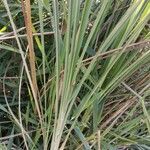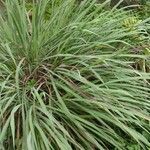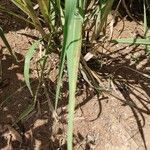| Therapeutic use
|
Antiviral agents (fruit), Analgesia (leaf), Analgesics (leaf), Anti-bacterial agents (leaf), Antifungal agents (leaf), Antinematodal agents (leaf), Antineoplastic agents (leaf), Antipyretics (leaf), Antirheumatic agents (leaf), Antiviral agents (leaf), Central nervous system diseases (leaf), Colic (leaf), Common cold (leaf), Dyspepsia (leaf), Elephantiasis (leaf), Expectorants (leaf), Fever (leaf), Flatulence (leaf), Headache (leaf), Hypohidrosis (leaf), Low back pain (leaf), Periodontal diseases (leaf), General tonic for rejuvenation (leaf), Sprains and strains (leaf), Tranquilizing agents (leaf), Antiperiodic (leaf), Diaphoretic (leaf), Depurative (leaf), Anti-bacterial agents (root), Headache (unspecified), Ache(Stomach) (unspecified), Antispasmodic (unspecified), Carminative (unspecified), Cold (unspecified), Tuberculosis (unspecified), Cough (unspecified), Cyanogenetic (unspecified), Dentifrice (unspecified), Depurative (unspecified), Diaphoretic (unspecified), Dyspepsia (unspecified), Elephantiasis (unspecified), Emmenagogue (unspecified), Expectorant (unspecified), Eye (unspecified), Fever (unspecified), Flu (unspecified), Gingivitis (unspecified), Insecticide (unspecified), Intestine (unspecified), Leprosy (unspecified), Malaria (unspecified), Mouthwash (unspecified), Pectoral (unspecified), Pneumonia (unspecified), Preventitive(Cold) (unspecified), Pyorrhea (unspecified), Rheumatism (unspecified), Spasm (unspecified), Stimulant (unspecified), Sudorific (unspecified), Tea (unspecified), Tonic (unspecified), Toothache (unspecified), Antiseptic (unspecified), Anodyne (unspecified), Diuretic (unspecified), Sprain (unspecified), Abdomen (unspecified), Hypertension (unspecified), Neuritis (unspecified), Perfume (unspecified), Anorexia (unspecified), Anthelmintics (unspecified), Antidotes (unspecified), Antifungal agents (unspecified), Antimutagenic agents (unspecified), Antinematodal agents (unspecified), Antipyretics (unspecified), Antirheumatic agents (unspecified), Aphrodisiacs (unspecified), Appetite stimulants (unspecified), Bites and stings (unspecified), Bronchitis (unspecified), Cholera (unspecified), Colic (unspecified), Common cold (unspecified), Dysmenorrhea (unspecified), Epilepsy (unspecified), Flatulence (unspecified), Helminthiasis (unspecified), Hypohidrosis (unspecified), Irritable bowel syndrome (unspecified), Counterirritant (unspecified), Laxatives (unspecified), Low back pain (unspecified), Menstruation (unspecified), Mosquito control (unspecified), Neuralgia (unspecified), General tonic for rejuvenation (unspecified), Skin diseases (unspecified), Sprains and strains (unspecified), Vomiting (unspecified), Antiperiodic (unspecified), Antiemetics (whole plant), Anti-infective agents (whole plant), Central nervous system depressants (whole plant), Cholera (whole plant), Flatulence (whole plant), Hypohidrosis (whole plant), General tonic for rejuvenation (whole plant), Antiperiodic (whole plant)
|




